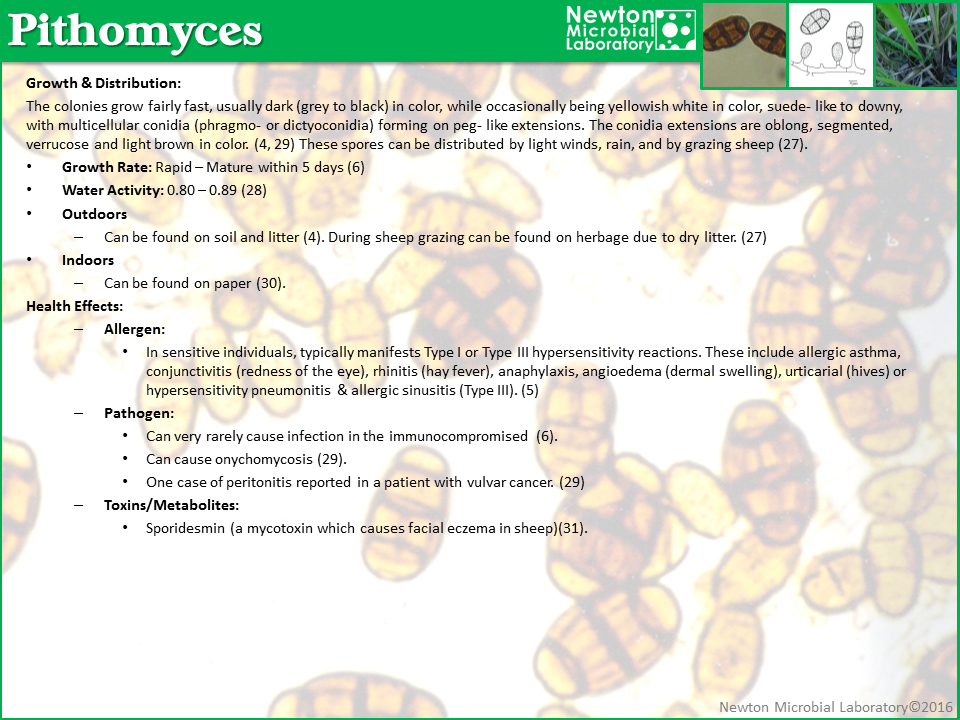Pithomyces
Growth & Distribution
The colonies grow fairly fast, usually dark (grey to black) in color, while occasionally being yellowish white in color, suede- like to downy, with multicellular conidia (phragmo- or dictyoconidia) forming on peg- like extensions. The conidia extensions are oblong, segmented, verrucose and light brown in color. (4, 29) These spores can be distributed by light winds, rain, and by grazing sheep (27).
Growth Rate: Rapid – Mature within 5 days (6)
Water Activity: 0.80 – 0.89 (28)
Outdoors
Can be found on soil and litter (4). During sheep grazing can be found on herbage due to dry litter. (27)
Indoors
Can be found on paper (30).
Health Effects
Allergen:
In sensitive individuals, typically manifests Type I or Type III hypersensitivity reactions. These include allergic asthma, conjunctivitis (redness of the eye), rhinitis (hay fever), anaphylaxis, angioedema (dermal swelling), urticarial (hives) or hypersensitivity pneumonitis & allergic sinusitis (Type III). (5)
Pathogen:
Can very rarely cause infection in the immunocompromised (6).
Can cause onychomycosis (29).
One case of peritonitis reported in a patient with vulvar cancer. (29)
Toxins/Metabolites:
Sporidesmin (a mycotoxin which causes facial eczema in sheep)(31).

